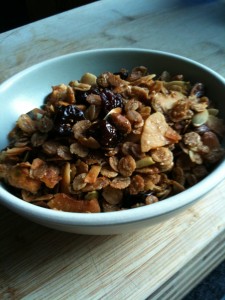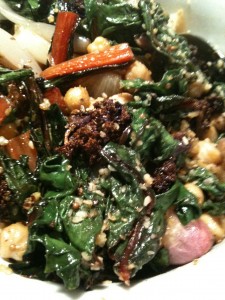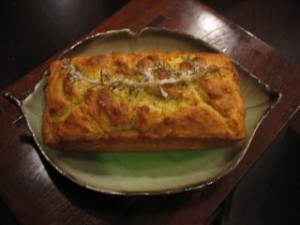One of my longest cooking (and eating) rituals is granola; I’ve been making an adaptation of Nigella Lawson’s granola recipe from Feast for over 5 years now, and eating it every morning with some Trader Joe’s O’s and a sprinkling of dried cranberries.
But when I spotted a tasty-looking recipe in the New York Times magazine recently, I thought, there’s nothing wrong with making a second kind of granola. Besides, I knew the coconut and dried cherries would appeal to Ben, who now might join me in my granola habit.
I made the recipe exactly as written, and it’s delicious, but sweeter than I like in the morning, so I might cut back on the sugar and syrup the next time around.
Eleven Madison Park Granola
By SAM SIFTON
2 3⁄4 cups rolled oats
1 cup shelled pistachios
1 cup unsweetened coconut chips
1/3 cup pumpkinseeds
1 tablespoon salt
1⁄2 cup light brown sugar
1/3 cup maple syrup
1/3 cup extra virgin olive oil
3⁄4 cup dried sour cherries.
1. Preheat oven to 300. In a large bowl, mix together the oats, pistachios, coconut, pumpkinseeds and salt.
2. In a small saucepan set over low heat, warm the sugar, syrup and olive oil until the sugar has just dissolved, then remove from heat. Fold liquids into the mixture of oats, making sure to coat the dry ingredients well.
3. Line a large rimmed baking sheet with parchment paper or a silicone baking mat, and spread granola over it. Bake until dry and lightly golden, 35 to 40 minutes, stirring granola a few times along the way.
4. Remove granola from oven, and mix into it the dried sour cherries. Allow to cool to room temperature before transferring to a storage container. Makes about 6 cups.
Adapted from Daniel Humm, Eleven Madison Park, New York.




